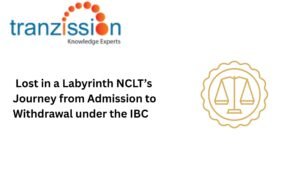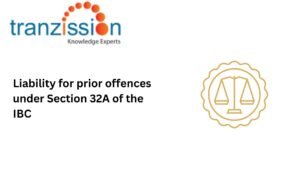
Alternatives to Company Liquidation

Table of Contents
Liquidation is not always the optimal solution, especially when considering the potential loss of value and jobs. It can lead to immediate loss of employment for all employees, impacting not only the individuals but also their families and communities. By carefully considering Alternatives to Company Liquidation can avoid negative consequences of liquidation and preserve more value and jobs for all stakeholders.
Why Consider Alternatives to Company Liquidation?
Alternatives, such as restructuring, allows companies to address financial distress, optimise operations, and potentially return to a sustainable business model. Hence, enabling them to continue operations and retain employees. In Australia, restructuring activity surges significantly in FY24, indicating many companies are opting to reorganize rather than Alternatives to Company Liquidation. This trend reflects a global movement where companies prioritize survival through strategic adjustments over ceasing operations.
Formal Rescue Mechanisms
- Company Voluntary Arrangement (CVA) or Voluntary Arrangement: A CVA is a legally binding agreement that allows a financially distressed company to restructure its debts and continue trading, while also providing moratorium protections for a short period, typically 20-28 days. During the CVA process, creditors are prevented from taking legal action against the company for a limited time, allowing the company to focus on restructuring. It requires approval from at least 75% of creditors by value of debt. The main benefit is the ability to continue operations, but the strict creditor approval can be a challenge.
- Company Administration or Voluntary Administration: These are both insolvency processes that allow a company to temporarily pause debt payments and restructure its finances, with the goal of either rescuing the business or selling it as a going concern. However, there are differences between the two, company administration is court-appointed and more structured, while voluntary administration is initiated by the company and offers more flexibility.
Debt Restructuring Strategies
- Out‑of‑Court Debt Renegotiation & Payment Plans: Out‑of‑Court Debt Renegotiation and payment plans involve negotiating with creditors, like banks and suppliers, to restructure existing debts, thereby extending payment terms or settling for a reduced amount, without resort to formal legal proceedings. This approach aims to alleviate a debtor’s financial burden and avoid more costly and time-consuming legal processes like bankruptcy.
- Debt-for-Equity Swaps & Mezzanine Financing: Debt-for-Equity Swaps involve exchanging outstanding debt for equity in the company, while Mezzanine Financing is a hybrid of debt and equity financing that often includes the option to convert to equity upon certain conditions. These strategies are used by companies facing financial distress to improve their balance sheets and avoid bankruptcy.
- Debtor-in-Possession (DIP) Financing: DIP financing is a type of financing specifically for companies undergoing restructuring in the United States (US), under Chapter 11 of the Bankruptcy Code. It provides a company with new loans that have “super priority” status, meaning they are repaid before other debts allowing the company to continue operating during the restructuring process. This helps stabilize operations and facilitates the successful reorganization or sale of the business.
Other Structural Options
There are also other options available, namely:
- Strike-Off or Voluntary Dissolution: This type of dissolution is a legal process where a company’s name is removed from the register of companies, effectively ending its legal existence. It is suitable for companies that are no longer trading or have ceased operations and have minimal or no assets or liabilities.
- Reconstruction & Demerger: Reconstruction and demerger allows for continuity of business operations while the old entity is liquidated, requiring shareholder approval for the transfer. They are tools that allow companies to adapt to changing market conditions, improve efficiency, or address specific business challenges by transferring parts or all of their operations to a new legal entity.
- Assignment for the Benefit of Creditors (US): This is a state-level, out-of-court process where a financially distressed business transfers its assets to an assignee who then Alternatives to Company Liquidation those assets and distributes the proceeds to creditors. It is an alternative to Chapter 7 bankruptcy, often quicker and less expensive.
Read more : What is the purpose of AFA for Insolvency professionals?
Informal & Hybrid Approaches
Informal and hybrid approaches to corporate restructuring involve out-of-court negotiations and settlements with creditors, and include:
- Informal Creditor Arrangements: This involves direct negotiations and settlements without formal processes. It allows for tailored solutions where creditors agree to terms that might be more favourable than those offered in a formal setting. These arrangements can involve various methods, including debt consolidation, payment plans, or debt settlement agreements.
- Asset Stripping & Managed Exits: Asset stripping and managed exits involve selling off a company’s assets, either to preserve the core business or to facilitate the sale of specific units. This strategy can be controversial due to potential negative impacts on employees and communication when a company is weakened or shut down. However, it can be a way to maximise shareholder value and reallocate resources to more productive areas.
Implementation Roadmap
- The initial step involves a thorough analysis of the company’s financial position, including its assets, liabilities, and cash flow. The goal is to determine if the company can be restructured to become viable or if Alternatives to Company Liquidation is a more appropriate course of action.
- Once viability is assessed, it is crucial to engage an insolvency professional or financial advisor, who can provide expert guidance throughout the restructuring process.
- Based on the assessment and advice, a comprehensive restructuring plan is developed. This plan outlines the specific actions needed to address the company’s financial issues, including debt reduction, operational changes, and potential asset sales.
- Open and transparent communication with creditors is essential, and creditors need to be informed about the proposed restructuring plan and its potential impact on their claims. This may involve negotiations and adjustments to the plan to gain creditor support.
- The final step involves implementing the restructuring plan, either through a formal legal process like court-supervised restructuring or through an informal agreement with creditors. Formal processes offer legal protection and binding agreements, with informal approaches offer more flexibility.
Conclusion
Restructuring can maximize the value of the company for all stakeholders, including creditors, employees, and shareholders, compared to liquidation in IBC . It often prioritises keeping the company operational, thus preserving jobs and livelihoods. Further, creditors often have a higher chance of recovering their investments through a restructured company rather than liquidation. However, it is necessary to note that the longer a company waits to address financial distress, the more limited the options become, and the more likely it is to be forced into Alternatives to Company Liquidation.





